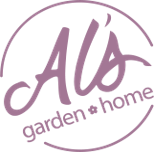April is the time to begin planting veggies!
We are right in the thick of Spring and now is the time to plant edibles in your garden, raised beds, or containers. Not sure where to begin? Here are some great tips to get your bounty in the ground and ready to eat in a few months.
There are a variety of vegetables to choose from….and they are all delicious! Below are the primary categories.
|
TYPE |
FAMILY |
VEGETABLES/HERBS |
| Cold Crop | Cabbage | Broccoli, Brussels Sprouts, Cabbage, Cauliflower, Kale |
| Curcurbit | Cucumber | Cucumbers, Gourds, Pumpkins, Squash, Watermelon |
| Solanaceous | Tobacco | Eggplant, Peppers, Tomatoes |
| Legumes | Pea | Beans, Peas, Peanuts |
| Perennial Herb | Lamiaceae | Mint, Thyme, Oregano, Rosemary, Basil (Annual) |
| Annual Herb | Parsley | Coriander, Parsley |

Calculate how much space the plants in your edible garden will need to grow and thrive. Each plant or seed packet will provide spacing information to determine their growth size. One of the most common problems people experience in vegetable gardening is overcrowding, which diminishes yields and increases the risk of disease.
Planning and mapping your garden or pots will result in successful harvesting.
Thoughtfully place taller plants on the north or northwest side of the garden so they won't shade other plants. Medium-height plants should go in the middle and shorter plants should go on the south side of the garden. This placement will maximize sun exposure and air flow throughout the plants.
Group plants by their category and rotate where you plant each category in the garden. Plant perennial vegetables or herbs (artichoke, asparagus, rhubarb, etc.) in their own bed or in the corner of the garden so they are not disturbed when other vegetables are cultivated.

Vining plants like cucumbers and squash can take up a lot of space in the garden. Growing vines on trellises or supports not only saves space, but also adds visual interest and makes harvesting easier.
Crop rotation can prevent a buildup of soil-borne pests and diseases specific to one type of crop. This occurs when the same type of plants are grown in the same spot year after year. Keep a record of planting times, harvest times, successes, and failures, so planning your garden next year is a breeze!
Check out our edible planting calendar to know when to best start your home farming. If you want to browse through our selection of vegetables, fruits, and other edible plants, head over to our gardening store at Al’s Garden & Home.



Even midway through May right now, and my tomatoes, peppers and other starts still aren’t thriving – it’s a weird spring this year and edibles aren’t loving it.
I think you need to hold off on planting most of the garden until it’s warmer. Tomatoes, basil, cucumbers and squash will not do well until the soil and air temps rise! My friend and fellow gardener says tomatoes like nights in the 50’s. I have planted onions, peas and kale as they can take the cold.
Leave a comment